
JOURNAL OF MATERIALS ENGINEERING AND PERFORMANCE
Scope & Guideline
Shaping the Future of Engineering with Innovative Insights
Introduction
Aims and Scopes
- Materials Characterization:
The journal emphasizes the characterization of materials at various scales, studying their microstructural features, mechanical properties, and performance under different conditions. - Advanced Manufacturing Techniques:
A core focus on innovative manufacturing processes, especially additive manufacturing (3D printing), laser processing, and friction stir welding, demonstrating how these techniques influence material properties. - Corrosion and Wear Studies:
Investigations into the corrosion resistance and wear behavior of materials, particularly in harsh environments, are frequently featured, highlighting the importance of durability in engineering applications. - Mechanical Performance Evaluation:
The journal publishes research on the mechanical performance of materials, including fatigue, impact, and tensile properties, often in relation to processing parameters and treatment methods. - Computational Materials Science:
There is a notable inclusion of computational approaches, such as machine learning and modeling, to predict material behavior and optimize processing parameters. - Functionally Graded Materials and Coatings:
Research on the development and performance of functionally graded materials and advanced coatings for improved performance in specific applications is a significant area of publication.
Trending and Emerging
- Additive Manufacturing Innovations:
There is a notable increase in research related to additive manufacturing processes, particularly with a focus on optimizing parameters, improving material properties, and exploring new materials for 3D printing applications. - Nanomaterials and Nanocomposites:
Research on nanomaterials, particularly their incorporation into traditional materials to enhance properties such as strength, corrosion resistance, and wear resistance, is trending upward. - Sustainability and Green Materials:
A growing emphasis on sustainable materials, recycling practices, and the development of biodegradable composites indicates a shift towards environmentally friendly engineering solutions. - Machine Learning Applications in Materials Science:
The integration of machine learning techniques for predicting material behaviors, optimizing processing parameters, and enhancing design processes is increasingly prevalent in recent publications. - Advanced Coatings and Surface Treatments:
Emerging techniques in coatings and surface treatments, including multifunctional coatings and environmentally friendly processes, are gaining attention, reflecting the demand for improved material performance. - Biomaterials and Bioengineering Applications:
Research on biomaterials, especially those designed for medical applications, is on the rise, focusing on their mechanical properties, corrosion resistance, and biocompatibility.
Declining or Waning
- Traditional Metallurgy:
Research focusing solely on traditional metallurgy techniques without the integration of modern manufacturing processes or advanced materials has decreased, indicating a shift towards more innovative approaches. - Basic Material Properties without Contextual Applications:
Studies that report basic material properties without exploring their applications or implications in real-world scenarios are becoming less frequent, as the journal emphasizes relevance to engineering performance. - Conventional Coatings without Novel Modifications:
The publication of articles on conventional coatings without novel modifications or enhancements has waned, reflecting a trend towards more advanced and functionalized coatings. - Single Material Studies:
Research focusing exclusively on single materials rather than composite or hybrid systems is on the decline, as interdisciplinary approaches gain more attention. - Static Analysis without Dynamic Considerations:
Papers that analyze materials under static conditions without considering dynamic loading or environmental factors are becoming less prevalent, highlighting the journal's shift towards more comprehensive studies.
Similar Journals
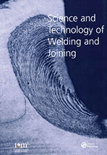
SCIENCE AND TECHNOLOGY OF WELDING AND JOINING
Elevating Standards in Materials Science and JoiningScience and Technology of Welding and Joining, published by SAGE Publications Inc, is a leading academic journal dedicated to advancing knowledge in the fields of condensed matter physics and materials science. With an impressive impact factor that highlights its influence, this journal serves as a premier platform from 1996 to 2024, facilitating innovative research in welding and joining technologies. Situated in the United Kingdom, the journal holds prestigious Q1 rankings in both condensed matter physics and miscellaneous materials science categories, underscoring its commitment to excellence and contribution to the scientific community. As a resource for researchers, professionals, and students alike, it offers insights into the latest developments in the field, ensuring that cutting-edge studies and applications are readily accessible to its audience. Despite not being an open-access journal, its contributions remain invaluable, bridging theoretical advancement with practical implications in welding and materials engineering.
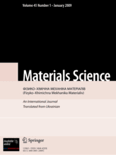
MATERIALS SCIENCE
Advancing the Frontiers of Materials Science.MATERIALS SCIENCE, a prominent journal published by SPRINGER, serves as a vital resource for researchers, professionals, and students in the fields of materials science, mechanical engineering, and condensed matter physics. With its ISSN 1068-820X and E-ISSN 1573-885X, this journal has been dedicated to sharing innovative research since its inception in 1993, and it continues to publish groundbreaking findings through 2024. Although it operates as a traditional subscription-based journal, its ranking in the Q3 quartile across multiple scientific categories, including Condensed Matter Physics, Materials Science, Mechanical Engineering, and Mechanics of Materials, signifies its relevance and impact in the academic community. Notably, its Scopus classifications reveal a competitive standing among its peers, ranking within the 25th to 33rd percentiles across various engineering and physics disciplines. The journal remains a key platform for disseminating valuable insights, fostering collaboration, and advancing the understanding of materials science.
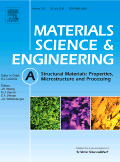
MATERIALS SCIENCE AND ENGINEERING A-STRUCTURAL MATERIALS PROPERTIES MICROSTRUCTURE AND PROCESSING
Advancing the Frontiers of Materials ScienceMATERIALS SCIENCE AND ENGINEERING A-STRUCTURAL MATERIALS PROPERTIES MICROSTRUCTURE AND PROCESSING, published by ELSEVIER SCIENCE SA, is a highly regarded journal specializing in the fundamental and applied aspects of materials science. Since its inception in 1988, this journal has established itself as a leading platform for disseminating innovative research findings, particularly focused on structural materials, their properties, microstructure, and processing techniques. With a prominent impact in the field, it ranks in the Q1 category across several disciplines including Condensed Matter Physics, Materials Science, Mechanical Engineering, and Nanoscience and Nanotechnology, highlighting its significance and influence within the academic community. The journal is accessible to a global audience of researchers, professionals, and students, underscoring its commitment to advancing knowledge in materials engineering. Aspiring authors and readers will find this journal an essential resource for cutting-edge research and the latest advancements in the field, further supported by its impressive Scopus rankings that place it among the top-tier publications.
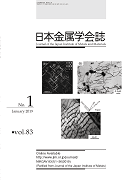
Journal of the Japan Institute of Metals and Materials
Illuminating the future of materials science and engineering.Journal of the Japan Institute of Metals and Materials (ISSN: 0021-4876, E-ISSN: 1880-6880) serves as a vital academic platform under the esteemed auspices of the Japan Institute of Metals & Materials. This journal, with a rich publication history dating back to 1937, focuses on advancing knowledge in the fields of metallurgy, materials science, and engineering, making it an important resource for researchers, professionals, and students alike. Although the journal has been categorized in Q4 quartiles across several subject areas, including Condensed Matter Physics and Materials Chemistry, it plays a critical role in disseminating essential findings and fostering discussion regarding innovations in metal and materials research. Notably, the journal operates without open access, which encourages targeted readership engagement through its curated content. Based in Japan, it continues to contribute significantly to the academic community by bridging the gap between scientific inquiry and practical application in materials technology.

KOVOVE MATERIALY-METALLIC MATERIALS
Cultivating Knowledge in the World of Metallic MaterialsKOVOVE MATERIALY-METALLIC MATERIALS, published by REDAKCIA KOVOVE MATERIALY, is a prominent journal embedded within the field of materials science, focusing particularly on metallic materials. With a history dating back to 1968, this Slovakian journal has made significant contributions to the understanding of materials chemistry, mechanical engineering, and the mechanics of materials. While currently classified in the Q4 category for Materials Chemistry and Mechanical Engineering, and Q3 for Metals and Alloys, it aims to provide a platform for high-quality research and novel findings in these domains. Furthermore, the journal is indexed within Scopus, reflecting its engagement with the global scientific community and its role in disseminating pivotal studies. Researchers, professionals, and students will find crucial insights and developments in the field, making it a valuable resource for those seeking to enhance their understanding of metallic materials and their applications.

Obrabotka Metallov-Metal Working and Material Science
Bridging Theory and Application in Material ScienceObrabotka Metallov-Metal Working and Material Science is a pivotal journal published by Novosibirsk State Technical University, focusing on the dynamic fields of mechanical engineering, mechanics of materials, and the science of metals and alloys. With ISSN 1994-6309 and E-ISSN 2541-819X, the journal serves as a crucial platform for disseminating research from Russia and around the globe. Currently classified in the Q4 category for Mechanical Engineering and Mechanics of Materials, as well as Q3 for Metals and Alloys, it encompasses a wide range of studies from fundamental research to innovative applications. Despite its relatively recent inception in 2019, the journal has established itself with Scopus rankings that highlight its growing influence—Rank #122 out of 176 in Materials Science and Rank #510 out of 672 in Engineering. This journal aims to foster collaboration among researchers, professionals, and students by featuring original articles, reviews, and technical notes that address contemporary challenges in metal processing and material science. As it continues to evolve through 2024, Obrabotka Metallov remains dedicated to enhancing the understanding and application of materials science, making it a significant resource for those invested in the future of engineering and technology.

Materiali in Tehnologije
Advancing the Future of Materials ScienceMateriali in Tehnologije is a distinguished peer-reviewed journal dedicated to the field of materials science, focusing specifically on metals and polymers. Published by the Institute for Metals and Materials Technology in Slovenia, this open-access journal has been at the forefront of disseminating research findings and innovative technologies since 2000. With a current impact factor that reflects its increasing visibility in the academic community, Materiali in Tehnologije serves as an invaluable resource for researchers, professionals, and students alike, encompassing a wide array of studies in the categories of Metals and Alloys, as well as Polymers and Plastics. The journal is indexed in Scopus, highlighting its relevance and contribution to the field, particularly with its ranks of Q3 in Metals and Alloys and Q4 in Polymers and Plastics. As it converges towards 2024, Materiali in Tehnologije continues to be a pivotal platform for knowledge exchange, encouraging advancements in materials research and technology.
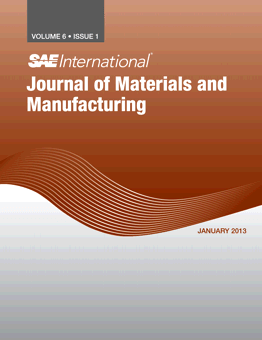
SAE International Journal of Materials and Manufacturing
Advancing the Frontiers of Materials and ManufacturingSAE International Journal of Materials and Manufacturing, published by SAE International, is a leading peer-reviewed journal that focuses on the advancements and research in the fields of materials science and manufacturing engineering. With ISSN 1946-3979 and E-ISSN 1946-3987, this journal is an essential resource for researchers, professionals, and students who are keen on exploring innovative materials and modern manufacturing techniques. Although the journal currently does not offer open access options, its rigorous selection process ensures the publication of high-quality papers that contribute significantly to the knowledge base in the industry. Recognized within the third and fourth quartiles across various engineering categories, including Industrial and Manufacturing Engineering and Mechanical Engineering, the journal provides an impactful platform for disseminating groundbreaking research. With a converged history since 2002 and a comprehensive approach to critical topics in mechanics of materials, it empowers the academic community with vital insights, trends, and methodologies that propel the future of manufacturing excellence.

FATIGUE & FRACTURE OF ENGINEERING MATERIALS & STRUCTURES
Exploring the Limits of Material EnduranceFATIGUE & FRACTURE OF ENGINEERING MATERIALS & STRUCTURES, published by WILEY, is a leading journal in the domains of materials science and mechanical engineering, with a solid reputation for advancing research on the behavior of materials under fatigue and fracture conditions. With an impressive impact factor and ranking in the top quartiles of its categories in 2023, this journal serves as a vital resource for academics, professionals, and students interested in the intricate mechanics of materials. The journal encompasses a comprehensive scope, covering both experimental and theoretical methodologies designed to understand and predict material performance under various loading conditions. As the journal continues to thrive since its inception in 1979 and is set to converge until 2024, it remains an essential platform for disseminating innovative and crucial findings in this specialized field. Researchers are invited to explore the wealth of knowledge presented within its pages, paving the way for enhanced engineering practices and material design.
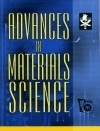
Advances in Materials Science
Connecting Researchers to Revolutionize Materials ScienceAdvances in Materials Science, published by SCIENDO, is a pivotal journal in the field of materials science that focuses on the latest developments and breakthroughs in the study and application of innovative materials. With a commitment to advancing knowledge across various sub-disciplines, this journal provides a platform for researchers, professionals, and students to share their findings, explore new methodologies, and discuss the implications of materials science on technology and industry. The journal, indexed under the ISSN 2083-4799 and E-ISSN 2083-4799, promotes open dissemination of research, encouraging a collaborative approach to problem-solving across disciplines. Its emphasis on high-quality, peer-reviewed articles positions it as an influential resource within the academic community, driving forward the boundaries of what is possible in materials science. Advances in Materials Science continues to be an essential read for anyone dedicated to understanding and innovating in the materials domain.